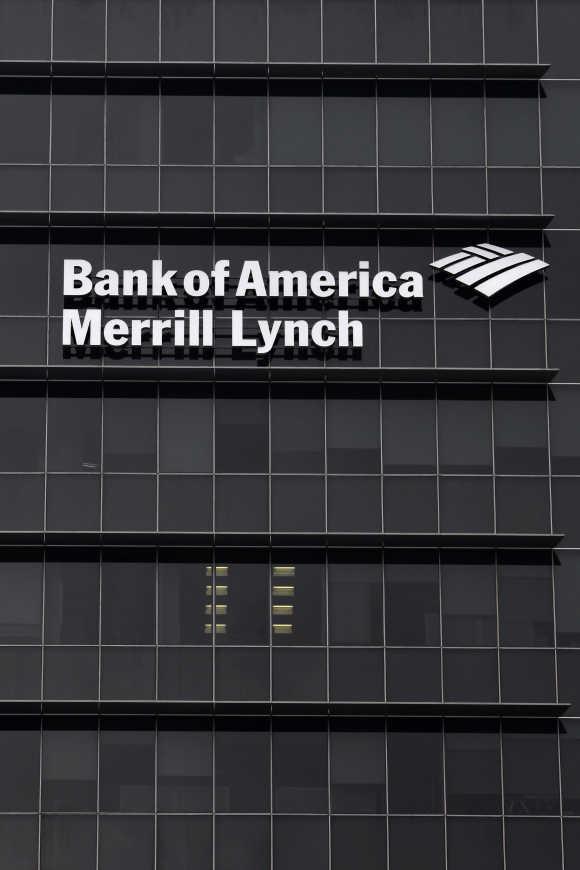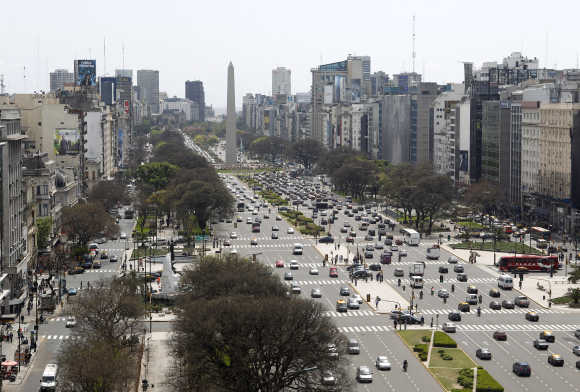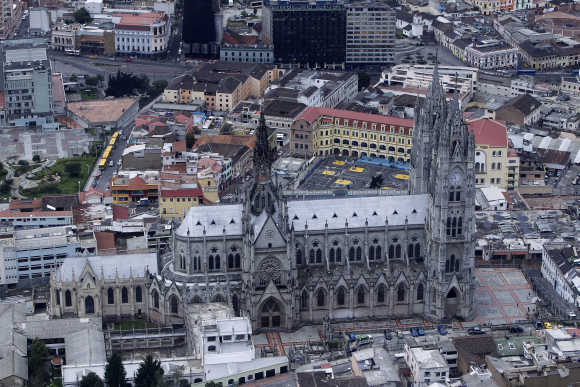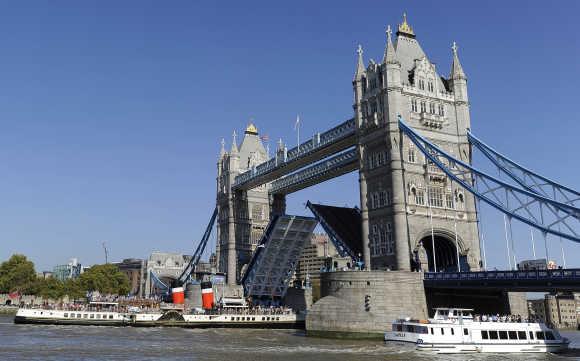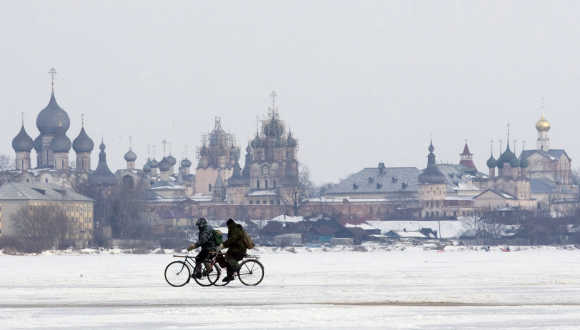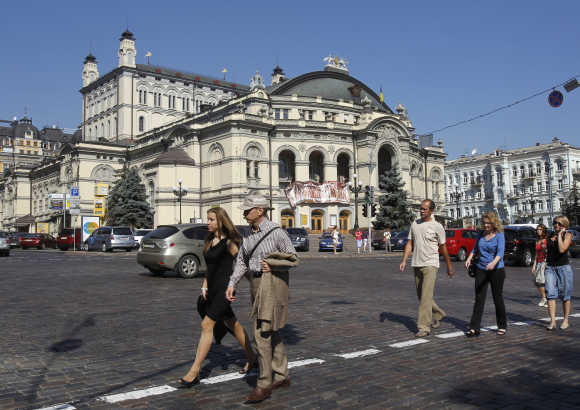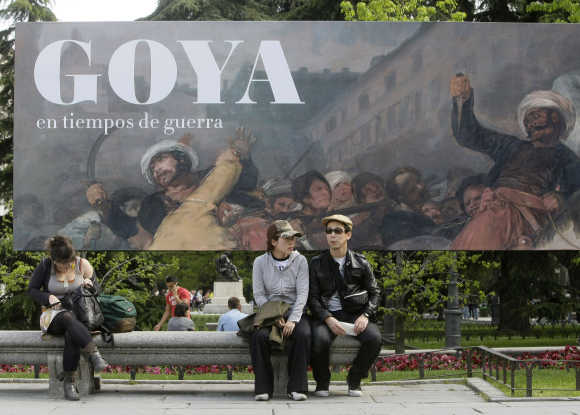 | « Back to article | Print this article |
Biggest banking crises in the world
A banking crisis is a financial crisis that affects banking activity. Banking crises include bank runs, which affect single banks; banking panics, which affect many banks; and systemic banking crises, in which a country experiences a large number of defaults and financial institutions and corporations face great difficulties repaying contracts.
Here we take a look at some of the biggest banking crises in the world.
Biggest banking crises in the world
Japanese asset price bubble
Period: (1986-2003)
The Japanese asset price bubble was an economic bubble in Japan from 1986 to 1991, in which real estate and stock prices were greatly inflated.
The bubble's subsequent collapse lasted for more than a decade with stock prices initially bottoming in 2003, although they would descend even further amidst the global crisis in 2008.
The Japanese asset price bubble contributed to what some refer to as the Lost Decade. Some economists, such as Paul Krugman, have argued that Japan fell into a liquidity trap during these years.
Click NEXT to read more...
Biggest banking crises in the world
Savings and loan crisis
Period: 1980s and 1990s
The savings and loan crisis of the 1980s and 1990s (commonly dubbed the S&L crisis) was the failure of about 747 out of the 3,234 savings and loan associations in the United States.
A savings and loan or "thrift" is a financial institution that accepts savings deposits and makes mortgage, car and other personal loans to individual members - a cooperative venture known in the United Kingdom as a Building Society.
As of December 31, 1995, it was estimated that the total cost for resolving the 747 failed institutions was $87.9 billion.
The remainder of the bailout was paid for by charges on savings and loan accounts - which contributed to the large budget deficits of the early 1990s.
Click NEXT to read more...
Biggest banking crises in the world
Finnish banking crisis
Period: 1990s
The Finnish Banking Crisis of 1990s was a deep systemic crisis of the entire Finnish financial sector that took place mainly in the years 1991-1993, after several years of debt-based economic boom in the late 1980s.
Its total taxpayer cost was roughly eight per cent of the Finnish GNP, making it the most severe of the contemporary Nordic banking crises.
The crisis has been attributed to a combination of macro-economic turbulence, weak regulation, and bank-specific problems.
Governmental intervention included bank takeovers, direct monetary assistance and temporary blanket guarantees to the banks.
Click NEXT to read more...
Biggest banking crises in the world
Venezuelan banking crisis
Period: 1994-1995
The 1994 banking crisis occurred in Venezuela when a number of the banks of Venezuela had to be taken over by the government.
The first to fail, in January 1994, was Banco Latino, the country's second-largest bank. Later, two banks accounting for 18 per cent of total deposits (Banco Consolidado and Banco de Venezuela) also failed.
On 9 August 1994, Banco de Venezuela became the 10th bank to be bailed out by the Venezuelan government during the crisis, with the government taking a majority stake for an estimated at $294m.
In total, between January 1994 and August 1995 17 of the country's 49 commercial banks, as well as some subsidiaries, failed - representing 53 per cent of the system assets.
Click NEXT to read more...
Biggest banking crises in the world
Asian financial crisis
Period: 1997
The Asian financial crisis was a period of financial crisis that gripped much of Asia beginning in July 1997, and raised fears of a worldwide economic meltdown due to financial contagion.
The crisis started in Thailand with the financial collapse of the Thai baht after the Thai government was forced to float the baht (due to lack of foreign currency to support its fixed exchange rate), cutting its peg to the US dollar, after exhaustive efforts to support it in the face of a severe financial overextension that was in part real estate driven.
At the time, Thailand had acquired a burden of foreign debt that made the country effectively bankrupt even before the collapse of its currency.
As the crisis spread, most of Southeast Asia and Japan saw slumping currencies, devalued stock markets and other asset prices, and a precipitous rise in private debt.
Click NEXT to read more...
Biggest banking crises in the world
Long-Term Capital Management
Period: 1998
Long-Term Capital Management was a speculative hedge fund based in Greenwich, Connecticut, that utilised absolute-return trading strategies (such as fixed-income arbitrage, statistical arbitrage, and pairs trading) combined with high leverage.
The firm's master hedge fund, Long-Term Capital Portfolio, failed in the late 1990s, leading to a bailout by other financial institutions, under the supervision of the Federal Reserve.
Click NEXT to read more...
Biggest banking crises in the world
Russian financial crisis
Period: 1998
The Russian financial crisis (also called "Ruble crisis") hit Russia on August 17, 1998. It resulted in the Russian government devaluing the ruble and defaulting on its debt.
Declining productivity, an artificially high fixed exchange rate between the ruble and foreign currencies to avoid public turmoil, and a chronic fiscal deficit were the background to the crisis.
The economic cost of the first war in Chechnya that is estimated at $5.5 billion (not including the rebuilding of the ruined Chechen economy) was also a cause of the crisis.
Click NEXT to read more...
Biggest banking crises in the world
Argentine economic crisis
Period: 1999-2002
The Argentine economic crisis (1999-2002) was a dire financial downturn that affected Argentina's economy during the late 1990s and the early years of the 2000s.
In macroeconomical terms, the critical period started with the decrease of real Gross Domestic Product in 1999 and ended in 2002 with a return to GDP growth.
However, the origins of the collapse, as well as the effects upon the country's residents, can be traced back to earlier economic and political decisions that were reportedly of a questionable nature.
Click NEXT to read more...
Biggest banking crises in the world
Ecuador banking crisis
Period: 1998-99
The 1998-99 Ecuador banking crisis resulted in about 70 per cent of the country's financial institutions closing. In 1999 economic activity decreased by 7-8 per cent and the currency depreciated by 195 per cent.
Per capita income in US dollar terms plummeted by 32 per cent during the year. Unemployment increased from nine per cent to 17 per cent and underemployment increased from 49 per cent to 55 per cent.
Around $1.6 billion of government of Ecuador funds were used to bailout banks that failed as a result of corrupt practices and mismanagement.
The money supply increased at an annual rate of 170 per cent to pay back depositors of failed banks. In March 1999, the government froze bank deposits to avoid hyperinflation.
Click NEXT to read more...
Biggest banking crises in the world
Uruguay banking crisis
Period: 2002
The Uruguay Banking Crisis was a major banking crisis that hit Uruguay in July 2002. In this, a massive run on banks by depositors caused the government to freeze banking operations.
The crisis was caused by a considerable contraction in Uruguay's economy and by over-dependence on neighbouring Argentina, which experienced an economic meltdown itself in 2001.
In total, about 33 per cent of the country's deposits were taken out of financial system and five financial institutions were left insolvent.
Click NEXT to read more...
Biggest banking crises in the world
Global Financial Crisis
Period: 2007-2012
The 2007-2012 global financial crisis, also known as the Global Financial Crisis, is considered by many economists to be the worst financial crisis since the Great Depression of the 1930s.
It resulted in the collapse of large financial institutions, the bailout of banks by national governments, and downturns in stock markets around the world.
In many areas, the housing market also suffered, resulting in evictions, foreclosures and prolonged unemployment.
The crisis played a significant role in the failure of key businesses, declines in consumer wealth estimated in trillions of US dollars, and a downturn in economic activity leading to the 2008-2012 global recession and contributing to the European sovereign-debt crisis.
Click NEXT to read more...
Biggest banking crises in the world
United Kingdom bank rescue package
Period: 2008
A bank rescue package totalling some $850 billion was announced by the British government on October 8, 2008, as a response to the ongoing global financial crisis.
After two unsteady weeks at the end of September, the first week of October had seen major falls in the stock market and severe worries about the stability of British banks.
The plan aimed to restore market confidence and help stabilise the British banking system, and provided for a range of short-term loans and guarantees of interbank lending, as well as up to 50 billion pounds of state investment in the banks themselves.
Click NEXT to read more...
Biggest banking crises in the world
United Kingdom bank rescue package
Period: 2009
A second bank rescue package totalling at least 50 billion pounds was announced by the British government on January 19, 2009, as a response to the ongoing global financial crisis.
The package was designed to increase the amount of money that banks could lend to businesses and private individuals.
This aid comes in two parts: an initial 50 billion pounds being made available to big corporate borrowers, and a second undisclosed amount that forms a form of insurance against banks suffering big losses.
Click NEXT to read more...
Biggest banking crises in the world
Belgian financial crisis
Period: 2008-2009
The 2008-2009 Belgian financial crisis is a major financial crisis that hit Belgium from mid-2008 onwards. Two of the country's largest banks - Fortis and Dexia - started to face severe problems, exacerbated by the financial problems hitting other banks in the world.
The value of their stocks, as well as the stocks of most other Belgian companies plunged. The government tried to control the situation by bailing-out banks and guaranteeing bank deposits.
Eventually Fortis was split into two parts - the Dutch part was nationalised, while the Belgian part was sold to the French bank BNP Paribas.
Click NEXT to read more...
Biggest banking crises in the world
Icelandic financial crisis
Period: 2008-2012
The 2008-2012 Icelandic financial crisis is a major economic and political crisis in Iceland that involved the collapse of all three of the country's major commercial banks following their difficulties in refinancing their short-term debt and a run on deposits in the Netherlands and the United Kingdom.
Relative to the size of its economy, Iceland's banking collapse is the largest suffered by any country in economic history.
Click NEXT to read more...
Biggest banking crises in the world
Russian financial crisis
Period: 2008-2009
The 2008-2009 Russian financial crisis, part of the world Economic crisis of 2008, was a crisis in the Russian financial markets as well as an economic recession that was compounded by political fears after the war with Georgia and by the plummeting price of Urals heavy crude oil, which lost more than 70 per cent of its value since its record peak of $147 on July 4, 2008 before rebounding moderately in 2009.
According to the World Bank, Russia's strong short-term macroeconomic fundamentals made it better prepared than many emerging economies to deal with the crisis, but its underlying structural weaknesses and high dependence on the price of a single commodity made its impact more pronounced than would otherwise be the case.
Click NEXT to read more...
Biggest banking crises in the world
Ukrainian financial crisis
Period: 2008-2009
Ukraine was hit heavily by the late-2000s recession, the World Bank expects Ukraine's economy to shrink 15 per cent in 2009 with inflation being 16.4 per cent.
The deficit of Ukraine's foreign trade in goods and services January through September 2009 was estimated at $1.08 billion, which was 9.5 times down on the same period in 2008, export of goods over the period decreased by 48.7 per cent, to $27.478 billion, while imports fell by 53.5 per cent, to $31.570 billion; export of services dropped by 23.2 per cent, to $6.841 billion, while imports were down by 19.9 per cent, to $3.829 billion (the deficit of Ukraine's foreign trade over the first nine months of 2008 was estimated at $10.284 billion, which was 2.7 times up on the same period of 2007).
Click NEXT to read more...
Biggest banking crises in the world
Spanish financial crisis
Period: 2008-2012
The 2008-2012 Spanish financial crisis began as part of the world late-2000s financial crisis and continued as part of the European sovereign debt crisis, which has affected primarily the southern European states and Ireland.
In Spain, the crisis was generated by long-term loans (commonly issued for 40 years), the building market crash, which included the bankruptcy of major companies, and a particularly severe increase in unemployment, which rose to 22.9 per cent by December 2011.
Click NEXT to read more...
Biggest banking crises in the world
Irish banking crisis
Period: 2008-2012
The 2008-2012 Irish banking crisis is a crisis in the Republic of Ireland which led to a number of financial institutions requiring government assistance, and subsequently led to a number of unexpected revelations about the private affairs of some banks.
In the 1995-2006 Celtic Tiger period of growth, development capital was raised in the interbank market, typically on a three-month basis, but with repayment not expected until two or three years later.
Given a decline in Irish property values and the freezing-up of the world's interbank market in 2007, it was certain by the start of 2008 that the Irish banking system would have great difficulty in financing its day-to-day operations.
This trading difficulty, and inadequate and/or lax supervision by the regulatory body, led to a series of government interventions, starting with a guarantee in September 2008.
